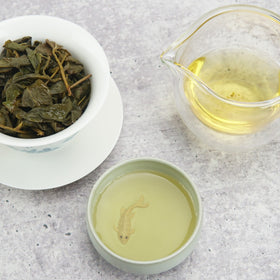Hammer’s history: gone in 60 seconds
The last open outcry auction of tea will take place any day now. By the time the next crop arrives, the gavel may well be history
Aniek Paul
Kolkata: Banging the gavel on transactions running into millions of rupees every day used to give auctioneers a sense of great authority, says Ashok Batra, chairman and managing director of Kolkata’s J Thomas and Co. Pvt. Ltd, the world’s biggest tea auctioneer. But the gavel is now on its way out.
Computers are replacing it, as ordained by the regulator, the Tea Board of India.
Trade veterans, such as Batra, say they are keeping away from the wired trading rooms. “People (like me) are making way for younger people with nimble fingers,” says Batra.
The last open outcry auction of tea in the country will be held later this month at the same place where it all began, Nilhat House (a building that derives its name from being an indigo mart) in central Kolkata—almost 150 years after J Thomas launched it. Founded by British imperialists, the company is now owned entirely by its Indian employees.
Industry data shows about 50% of India’s annual 1 billion kg tea crop is sold through auctions. The relatively cheaper CTC (granules yielding strong liquor), produced under the “crush, tear and curl” process from which it derives its name, and CTC dust are sold entirely through electronic auctions from six centres across India—Kolkata, Siliguri, Guwahati, Coimbatore, Kochi and Coonoor. The more expensive and speciality varieties—the so-called orthodox and Darjeeling teas—are sold through open outcry auctions, only at Nilhat House. “That’s only about 34 million kg in a year; 30 million kg of orthodox and 4 million kg of Darjeeling,” says Batra. That too is about to change.
It was on the recommendations of AF Ferguson and Co., a consulting firm which is now part of the Deloitte Consulting family, that the Tea Board introduced electronic auctions in 2009, starting with Coonoor in April.
This was seen as a key corrective measure after the world’s second largest tea auctioneer, the Kolkata-based Carritt Moran and Co. Pvt. Ltd, was run to the ground two years ago after defaulting on payments to tea-leaf sellers.
According to the regulator’s deputy chairperson Roshni Sen, electronic auctions are a “more transparent” way of discovering fair price and “eliminate possibilities of human errors”.
Though human errors are not known to have led to spats in auction rooms, they were not entirely impossible. “At times, it is difficult to determine from among several competing voices, that an auctioneer hears from across the room, who bid first,” says Viveck S. Crishna, J Thomas’ managing director.
That apart, the open outcry auction “hugely favoured buyers”, according to Sen. Sellers had hardly any say because they couldn’t attend the auctions. Under the new system, even if they are unable to intervene in the middle of an auction, they can log on to the Internet and track sales in real time—earlier, they would get to know only the final result, she says.
In the beginning, as with most things new, there was a lot of resistance, mainly from buying agents who feared they would become redundant. But the regulator held its ground and slowly implemented the system across centres.
Today, Kolkata has just five active auctioneers, down from around 10 in the 1980s. The key challenge for both auctioneers and buyers now is to get used to the nerve-racking pace of electronic auctions, under which it is mandatory to close the sale of several lots within a minute. “Typically, bidding gains momentum only 15 seconds from the close,” says Crishna. “And when people start chasing up the price by hundreds of rupees a kg, which is common in auctions of good-quality orthodox and Darjeeling tea, you need to think from your fingers.”
Technology has expanded almost all markets by enabling participation from remote locations, but not everyone benefits—in the case of shares, for instance, it killed the country’s regional stock exchanges. The electronic auction of tea put paid to the role of buying agents because trading wasn’t confined to auction rooms any more—people could log on to the Internet from anywhere and buy directly.
Tea auctioneers, however, will continue to play a key role in determining the fair value of the crop sold through them: They will sample each lot and decide the reserve price. And going by past experience, it is expected that technology will further strengthen leading auctioneers such as J Thomas, because they are the ones who are going to invest in technology and adapt better to changes, while marginalizing the weaker players.
Though the Tea Board may take a little more time to sound the official death knell for the open outcry auction of orthodox and Darjeeling tea, there will be no stock left to sell after January until the new crop arrives in warehouses in March-April.
By then, the gavel may be history.

